Does your local business need more paying customers? Need a proven Facebook ads strategy?
In this article, you'll discover three different levels of Facebook ads your local business should be using and learn which content and campaign types work best at each level.
You'll also find specific advice you can apply to attract new customers, package your offer and convert the customers you attract, and retarget people who don't immediately convert.
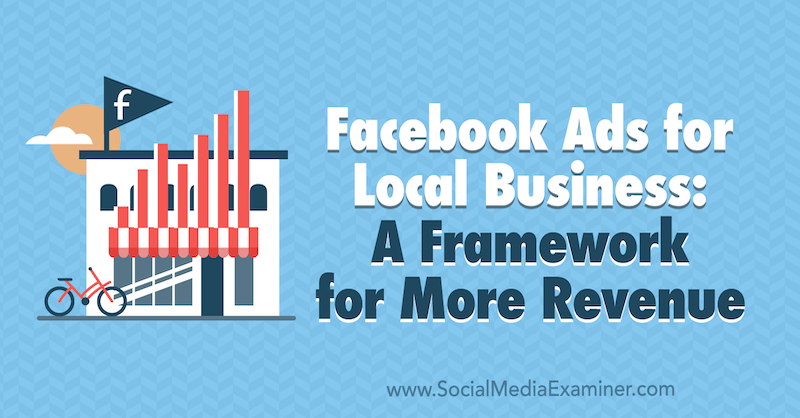
To discover a framework to create a profitable Facebook ads strategy for your local business, read the article below for an easy-to-follow walkthrough or watch this video:
#1: Run Top-of-Funnel Facebook Ads to Educate Your Audience
Level one of this Facebook ad strategy is at the top of the funnel and focuses on education, audience-building, and engagement. It's one of the most important parts of your ad strategy but it's often overlooked.
If your business is in a local market, you have a finite group of people you can serve. Some of those people will be looking for a business like yours but most of them won't. In any given market, there's usually about 3% of the population that's ready to buy what you have. However, there's usually another 15% that needs what you have and is open to buying from you but they simply don't know it yet or aren't ready to pull the trigger.
Most business owners focus on the 3% that's ready to buy. However, that other 15% is critical to your business and they're typically not being excited, engaged, or nurtured long-term. That's what level one is designed to do.
In your level-one Facebook ad campaigns, you want to focus primarily on educating your audience—not only on your industry, products/services, or business, but also on the topics that relate directly to your business.
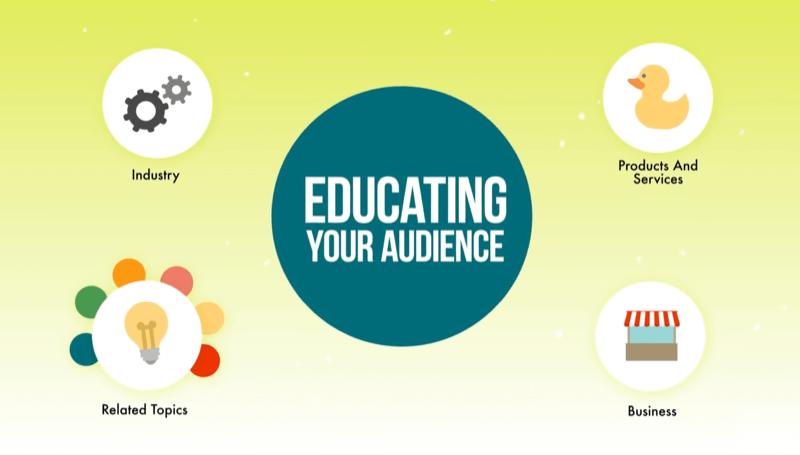
For instance, I was recently talking with a karate school owner who had been running Facebook ads strictly about an offer. For a long time, he'd get great results right off the bat but they would always dry up within a month or two. The reason is that the people who were buying were ready to sign their child up for karate. Those leads were the low-hanging fruit.
But what wasn't happening was the offer-focused ad did not create demand for the karate school.
The best way to create demand is to first identify the different avatars that your business serves. The karate business markets to parents but not all parents are alike. They have children of different ages, which will impact what messaging resonates with them.
Next, think about the primary driver for people to buy from you.
Get World-Class Marketing Training — All Year Long!
Are you facing doubt, uncertainty, or overwhelm? The Social Media Marketing Society can help.
Each month, you’ll receive training from trusted marketing experts, covering everything from AI to organic social marketing. When you join, you’ll also get immediate access to:
- A library of 100+ marketing trainings
- A community of like-minded marketers
- Monthly online community meetups
- Relevant news and trends updates
In this case, what's the primary driver for people to sign their child up for karate? Let's focus on three different groups of parents who might buy:
- Parents who already know that karate is something they want to try.
- Parents who know their child needs an activity or sport. They're not necessarily thinking about karate but they would be willing to sign their child up if they saw the value of karate itself.
- Parents who aren't necessarily thinking about sports and activities but they do have a child and care about that child's well-being, mindset, and physical activity levels.
Within these three groups, there's also a variety of subsets such as parents of girls as opposed to parents of boys, and parents of toddlers as opposed to parents of older children. Sometimes they'll respond to a similar message, but most of the time, they won't.
So the question is, how do you attract these different groups of people that would buy for different reasons?
The level-one ad campaigns in this Facebook ad strategy are designed to eliminate the one-size-fits-all strategy. They're also geared toward engaging with the community you serve and building brand awareness.
Even for people who aren't yet thinking of your business, they might think of you one day. For the karate school, maybe there's a couple who sees their content but don't have a child yet. Perhaps a few years down the road, they will. At that point, the couple will already know about the karate school and their unique selling proposition. They'll remember how the school goes out of their way to educate people and support the community.
To achieve all of these objectives with your level-one Facebook ad campaigns, you can use three different types of content: video, blog content, and engaging social posts.
Video
I recommend Facebook video because it's the least expensive and most effective. People are willing to watch a video for longer than they'll typically read. Additionally, you can also say more in a short period of time with video than you can in a written post. Your level-one Facebook ads aren't designed to directly generate leads so you don't want to spend a lot of money, but you do want to get maximum impact.
Another benefit of video is that you can create custom audiences based on the videos that someone watches and how long they're watching them.
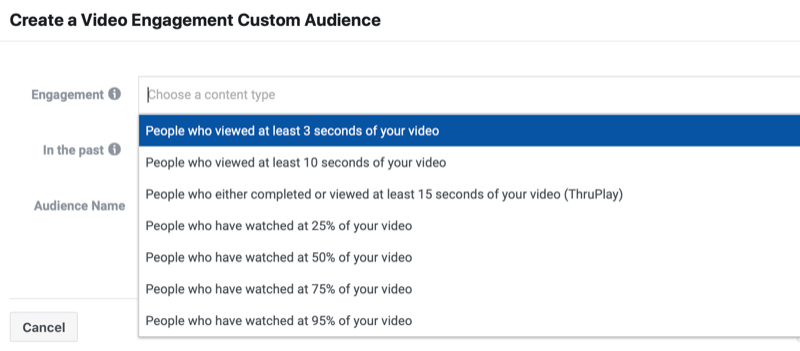
Those three groups of parents we just mentioned may not all respond to the same video.
The group of parents who are focused on the well-being of their child but aren't knowledgeable about karate may end up watching a video talking about how to boost their child's physical activity and mental health. If they're watching that video, the karate school knows they care about their child's well-being. And the video made these parents aware that mental and physical well-being are tied directly to karate.
For the parents who are thinking about signing their child up for some sort of activity but karate isn't on their radar, the school might create a video focusing on why karate is the ideal sport for children to improve their discipline and mental clarity. These are people who may not have had karate on their radar but now they do.

Discover Proven Marketing Strategies and Tips
Want to go even deeper with your marketing? Check out the Social Media Marketing Podcast! Publishing weekly since 2012, the Social Media Marketing Podcast helps you navigate the constantly changing marketing jungle, with expert interviews from marketing pros.
But don’t let the name fool you. This show is about a lot more than just social media marketing. With over 600 episodes and millions of downloads each year, this show has been a trusted source for marketers for well over a decade.
For the third group of parents who already know about karate, it's best to use video to differentiate the karate school's processes and what they do as a business to convince these parents to work with them specifically.
In local communities, a very close proximity to your location is often important for prospective customers. But if you can build a strong base of followers—people who are engaging, grateful for the content you provide, and willing to drive further—it's ultimately going to increase your potential pool of prospects.
Blog Content
You can also use blog content in the same way as video by creating a website custom audience based on which blog posts someone has clicked on. Bear in mind, however, that the cost per click is going to be significantly higher than the cost of someone watching your video.
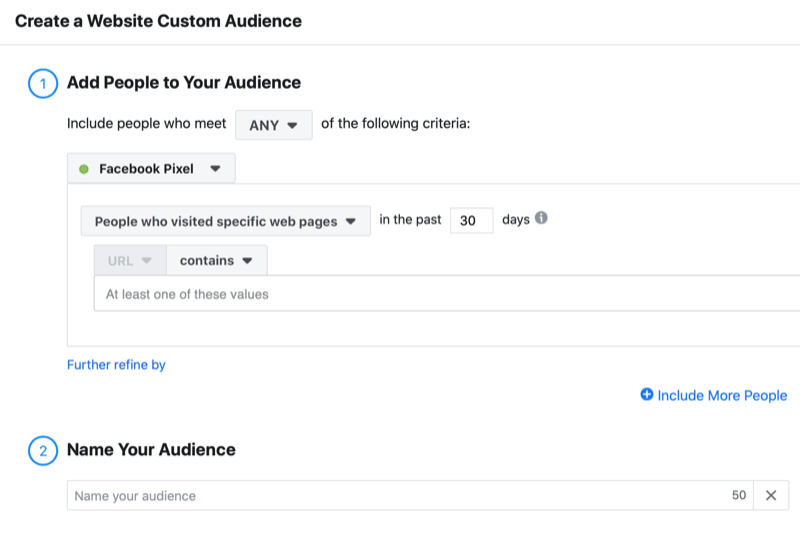
Of course, some people prefer to read written content rather than watch a video. So giving them that option as a second way to consume your content is a great idea. You're going to spend a bit more money but the simple act of them clicking on the blog post tells you they have an interest in that topic.
Engaging Facebook Posts
The third type of level-one content is an engaging Facebook post. These types of posts need to build an engagement base through likes, comments, and shares.
Make sure people understand exactly what your business does and what makes you great. You could use a before-and-after post or ask users if they prefer this or that. It's simple but people will comment. And as long as your post is tied directly to what your business does, you're still building brand awareness.
For level-one campaign objectives, you'll typically use video views for your videos, traffic for your blog posts, and engagement for your social posts. You're going to be looking at cost per ThruPlay for your video, cost per click for your blog posts, and cost per engagement for your Facebook posts.
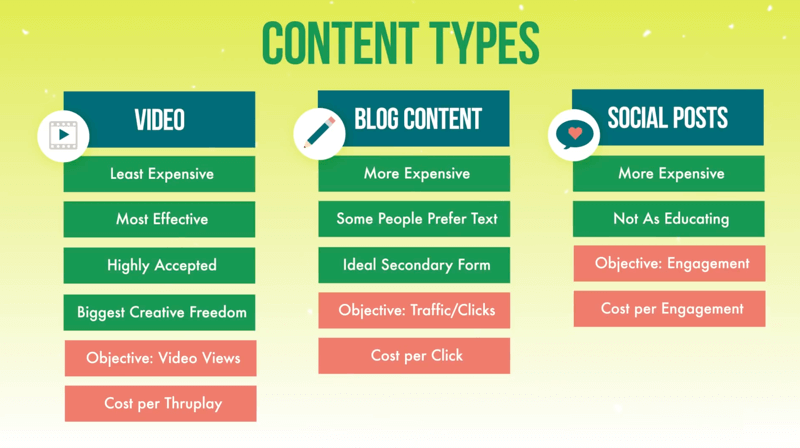
#2: Run Facebook Ads to Present Your Offer
Level-two ad campaigns are based on your Facebook pixel and are all about your offer. It's the way your products and services are packaged and presented to get someone to engage, opt in, and convert. The karate school gives people the first month free along with an amazing karate uniform. That's all they need to offer to really engage these potential prospects.
The types of campaign objectives you'll use at this level could be the lead generation objective for Facebook lead forms, conversions, traffic, or messages, if you're using Messenger lead generation.
Your focus at level two should be on conversions, cost per lead, and cost per event (such as someone scheduling an intro class for the karate school, a call, or an appointment).
The types of Facebook ads you present at this level depend on what happens in level one.
The wellness and well-being type of parent has consumed content about that so the karate school knows that matters to them. The offer needs to be presented in a way that connects the dots. The messaging and verbiage should talk about the child's well-being. When presenting the offer, you'd want to choose ad creative that evokes that feeling.
For those parents who are focused on an activity but not necessarily karate, you could do some type of comparison between the different sports. Show a child in karate versus a child in another sport and share the benefits the child in karate is getting.
For parents already interested in karate, truthfully presenting the offer directly to them could be exactly what you need to do. It doesn't work for everyone though, so you really need to think about this in a one-to-many marketing mentality.
#3: Retarget Your Leads With Facebook Ads
Level three of this Facebook ad strategy is focused on retargeting people who've visited your website or engaged with you on Facebook or Instagram. Based on the actions they've taken, you engage them this final time. Level three is designed to scoop up any of those leads who were potentially missed along the way.
These ads circle back around to say, “Hey, it looks like you forgot to finish signing up for your free month of karate school for your child.” The messaging focuses on a sense of urgency, exclusivity, validation, and reassurance that taking your offer is a good move for them.
Conclusion
When developing a Facebook ad strategy for a local business, most people go about it the wrong way. Following the three-part framework in this article will help you make every dollar count.
To make it easier to plan out your Facebook ads for each level of this strategy, I encourage you to just use a spreadsheet. Label it Level One—Education; Level Two—Offer; and Level Three—Retargeting.
Decide what your avatars will be for level one. Choose a video and a blog topic that works well for them.
For level two, already have your offer in place. This is important because your educational content needs to tie into your offer.
For level three, identify which actions someone needs to take to see these ads. Also make a list of the assets you have such as customer testimonials and before-and-after images—anything that really drives your point home to that audience. Establish the landing destinations for each, which will also determine your objectives.
What do you think? Will you try this Facebook ad framework for your local business? Share your thoughts in the comments below.
More articles on Facebook ads:
- Learn how to write Facebook ad copy that improves your conversions.
- Find out how to budget your Facebook ad spend.
- Discover how to run Facebook ads with the Store Traffic objective to attract more walk-in customers for your local business.
Attention Agency Owners, Brand Marketers, and Consultants

Introducing the Marketing Agency Show–our newest podcast designed to explore the struggles of agency marketers.
Join show host and agency owner, Brooke Sellas, as she interviews agency marketers and digs deep into their biggest challenges. Explore topics like navigating rough economic times, leveraging AI, service diversification, client acquisition, and much more.
Just pull up your favorite podcast app, search for Marketing Agency Show and start listening. Or click the button below for more information.

